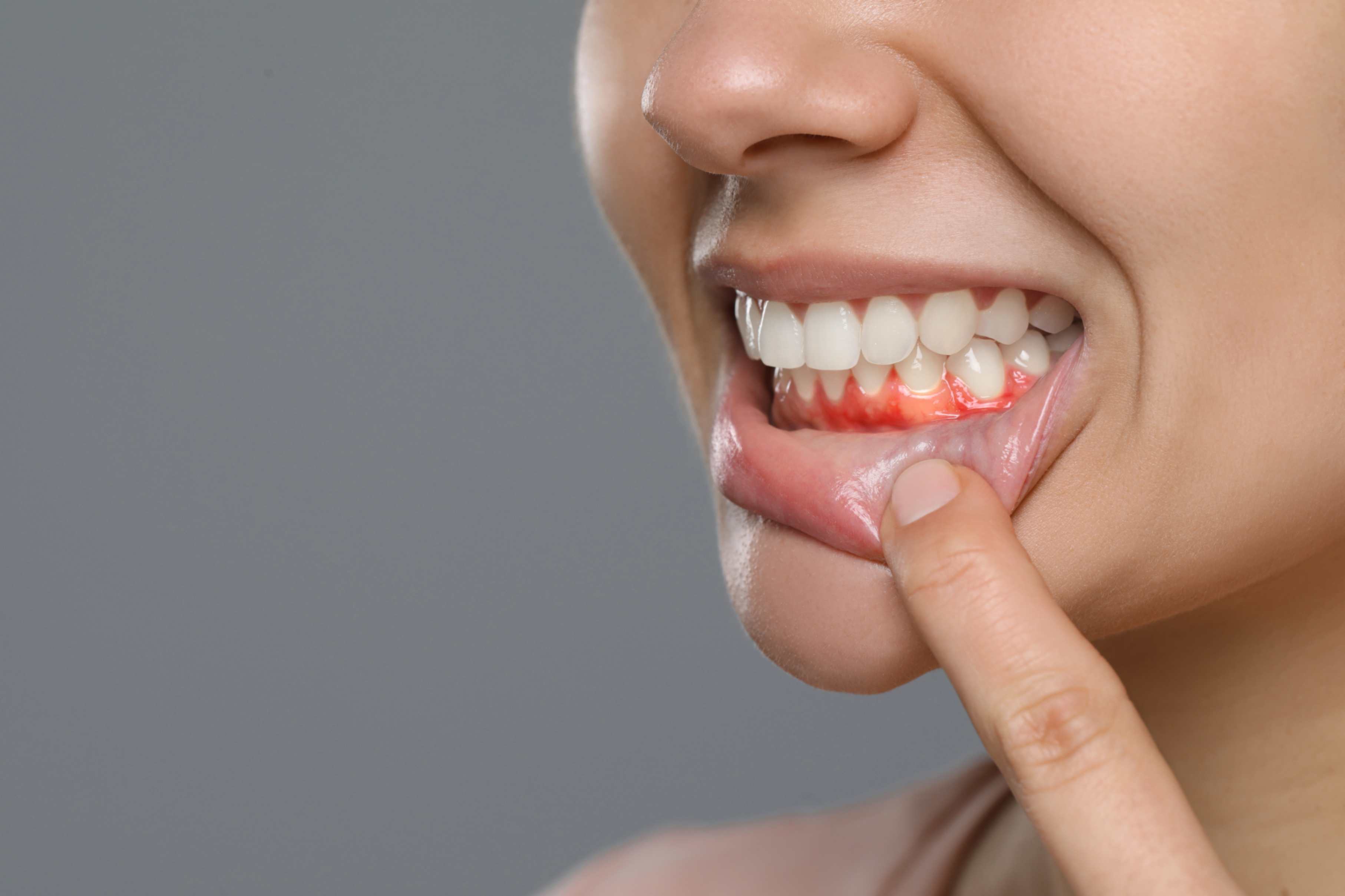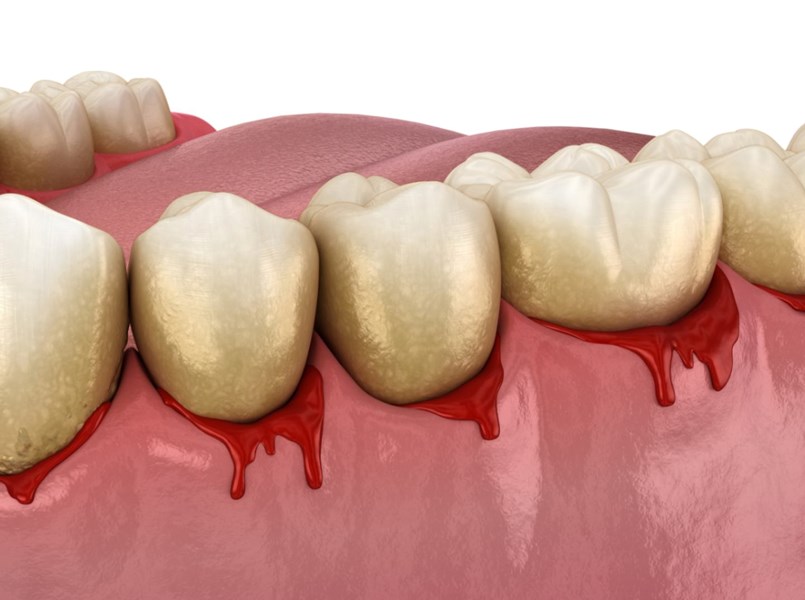

Diagnosing gingivitis: Gingivitis is often detected during routine dental check-ups, where the dentist evaluates the condition of your gums, carefully looking for signs of redness, swelling, or bleeding. In some cases, additional tests such as dental X-rays may be recommended to assess the tissues beneath the gumline in more detail.
Treatment of gum inflammation:
Professional tartar removal: The dentist will remove plaque and tartar to reduce inflammation.
Improved oral hygiene: Regular brushing, flossing, and the use of antibacterial products can help control gingivitis.
Proper nutrition: A balanced diet rich in vitamins and minerals strengthens the immune system and supports gum health.
Antibacterial mouth rinses: The dentist may recommend special rinses or gels with antibacterial properties.
Preventing gingivitis involves regular dental visits for early detection, thorough daily oral hygiene with brushing and flossing, and a healthy lifestyle - avoiding smoking, eating a balanced diet, and keeping blood sugar levels under control.

Gum inflammation under a dental bridge is a common issue, most often caused by difficulty maintaining proper oral hygiene.
Food and bacteria easily become trapped between the bridge and the gum, leading to irritation, redness, and discomfort.
We recommend using a water flosser regularly to keep the area under the bridge clean. A water flosser effectively removes food debris and helps reduce the risk of inflammation.
If the inflammation persists or keeps coming back, it's important to see your dentist. The cause could be decay beneath the bridge or an infection in the supporting tooth.
Early detection of the problem helps prevent more serious complications.
What are the most common causes of gum inflammation?
- Poor and insufficient oral hygiene
Plaque builds up along the gumline, triggering inflammation.
- Plaque and tartar buildup
If plaque isn't removed, it hardens into tartar, which further irritates the gums.
- Smoking
Reduces oxygen flow to the tissues and weakens the gums’ natural defense mechanisms.
- Hormonal changes (e.g. pregnancy, puberty, menopause)
Fluctuating hormone levels can increase the gums’ sensitivity to irritation.
- Chronic diseases such as diabetes
Increase susceptibility to infections and slow down healing of inflamed tissue.
- Poor nutrition and high stress
Weaken the immune system and reduce the body’s ability to fight off inflammation.
- Long-term use of certain medications
Some drugs can cause gum overgrowth, making hygiene more difficult and inflammation more likely.
Certain medications can affect gum health by causing overgrowth, dry mouth, or reducing the ability to properly clean around the teeth.
The most common groups of medications associated with gum inflammation include:
- Antiepileptics (e.g. phenytoin) - may cause gum overgrowth (hyperplasia)
- Immunosuppressants (e.g. cyclosporine) - used after organ transplants and can also lead to excessive gum tissue growth
- Calcium channel blockers (e.g. amlodipine, nifedipine) - used to treat high blood pressure, known for a similar effect
- Antihistamines, antidepressants, and some anti-anxiety medications - may cause dry mouth, increasing the risk of gum inflammation
- Oral contraceptives and hormone therapy - may heighten gum sensitivity to plaque in certain individuals
It’s important to note that these side effects don’t occur in every person, but if there’s suspicion that a medication is affecting the gums, your dentist should be able to recognize and assess it.
That’s why we take a detailed medical history from all our patients and update it annually, to detect any signs linked to general health conditions or ongoing therapies in a timely manner.
The difference between the terms "gums" and "gingiva" mainly comes down to language use, level of expertise, and the context in which they're used.
In everyday conversation among patients, the word “gums” is more commonly used, it’s shorter, familiar, and widely understood. However, in professional communication, especially in dentistry and medicine, the term “gingiva” or “gum tissue” is preferred, as it is more precise and clinically neutral.
It’s important to highlight that the term “gingiva” more clearly describes the tissue in question - it refers to the soft tissue surrounding the teeth and covering the alveolar bone, which plays a vital protective, structural, and immune role.
While the word “gums” may sound informal or a bit vague, using “gum tissue” in communication with patients and in educational materials helps avoid ambiguity and ensures clarity and professionalism.